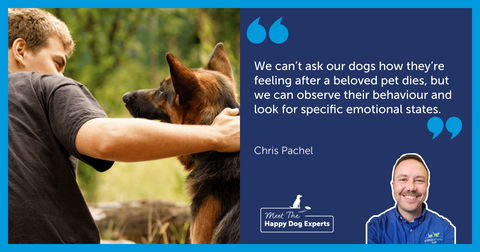
Tips on Preparing Your Dog for Back to Work
Your dog has had to adjust to a new lifestyle with the lockdown, we have been home a lot more and spent more time interacting with them. When we go back to work they will then need to adjust to a new schedule which will include spending more time alone.
There is a chance many dogs are going to suffer with separation anxiety which makes it extremely important to do something now to help your dog with staying home alone.
How to prepare your dog for going back to work
- Start with creating a safe haven (a den), somewhere comfortable with blankets or bedding and a place your dog can safely rest in peace and quiet and where they will not be disturbed. If kids are around, make sure they know to leave your dog alone when they are in this area as your dog is trying to relax. You can make this slightly more hidden and secure with blankets or linen.
- Use an ADAPTIL Calm Diffuser in the area your dog spends the most time to provide your dog with comforting pheromones that are scientifically proven to naturally reassure dogs, just like mothers reassure their puppies and help reduce their worries and help dogs through learning to be alone and to perceive changes or potential fears in a calmer way.
- A bored dog may become anxious, it's best to build up self-confidence with being alone now whilst you are home as you can build the time alone and away from you gradually. Starting for a short period of time, e.g. when you put the bins out, leave them in the house. Take any chance you get to enforce and repeat this. If it's a nice day maybe spend time outdoors whilst they stay inside relaxing. If you are working, work in a separate room to them.
- Create positive associations with being alone. You can provide long-lasting food puzzles or activity feeders. This will leave them with a positive feeling, but can also distract them from the fact they're alone and reduce their worries. Also, chewing and licking are both self-soothing for dogs and if they are worried at first, this can help sooth them.
- Use exercise to keep them physically and mentally active. Use up their extra energy that could be directed into unwanted behaviours if left with nothing else to do.
- Play some slow music during the day. Your dog may not like the change from hearing voices constantly throughout their day to complete silence. Have music or a radio talk show on during the day so when you go out you can keep it consistent. Reggae music seems to be a favourite for relaxing dogs, otherwise classical music can be calming.Take a look at our Calming Music for Dogs Playlist on YouTube for 15 hours of relaxing sounds.
- Dogs like their routine and it may worry them if this changes suddenly, try to walk and feed them at the times you would when you go back to work.
- Practice your new routine before you go back to your work gradually and build it up several weeks beforehand. This transition back to work can be tough for everyone but particularly hard for dogs to understand as they may not understand why this change is happening or know when you're coming back. They'll likely be scared, worried or anxious.

Finally, stay calm when we do go back to normal and you leave and return. Avoid any extra affection just before you go as it may trigger the dog's anticipation of your departure. As hard as it might be, just say a quick and calm goodbye. Try to avoid interacting with your dog immediately when you come through the door. You don't want your dog to get too excited when you're back, otherwise this will be all they think about when you're not there. When you return only engage and fuss your dog when they are calm and have all 4 paws on the floor, this is also rewarding your dog for their relaxed behaviour and not jumping up. Your dog might become anxious or adopt a whining or barking routine once you're out the door.
If you’d like to know more information and tips about dogs, check out the rest of our blogs online! You can also stay up to date with all the latest news and product info by signing up to our newsletter.








































